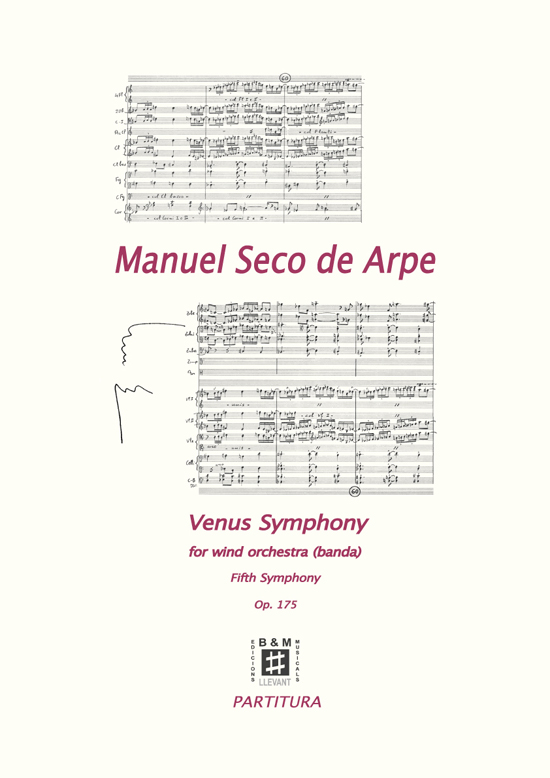Description
Author
Instrumentation
Plantilla
Format
Duration
Pages
Year of composition
ISMN
Ref.
Starting in 2020, alternating with other works for different instrumental and vocal combinations, I began writing what would become a series of seven symphonies for band. Each one corresponds to a day of the week and is named after the planet or celestial body associated with that day, as follows: Moon Symphony (First Symphony) for Monday; Mars Symphony (Second Symphony) with Tuesday; Mercury Symphony (Third Symphony) with Wednesday; Jupiter Symphony (Fourth Symphony) with Thursday; Venus Symphony (Fifth Symphony) with Friday; Saturn Symphony (Sixth Symphony) with Saturday; and finally Sun Symphony (Seventh Symphony) with Sunday. At the time of writing (September 2025), I have just begun Symphony No. 7 and the first three have already been premiered: the first two by the Alicante Symphonic Band and the third by the Barcelona Symphonic Band.
Despite their titles, the symphonies have nothing to do with the stars and planets. They are not descriptive in any way, but rather follow a temporal and stylistic organisation. It is a consonant – not tonal– style that alternates with a dissonance that emanates from the consonance itself, which we could call non-functional, as there are no tonal functions because there is no tonality.
All the symphonies are structured in three large movements, although these are presented without interruption, followed by minimal pauses or breaks. There is a formal characteristic that I wanted to implement in the works, which is that during the second movement (slow tempo) a scherzo is inserted, normally quite succinct, although energetic, except in the Jupiter Symphony, which leads into a waltz. This waltz is taken from my work Vals para flauta sola (Waltz for Solo Flute) (Madrid Flute Orchestra edition).
Another common feature in these symphonies is that the third movement alternates between two themes that are very contrasting in mood, usually a fast, rhythmic first theme and a more lyrical second theme in a slower tempo. I have reused several of these themes to compose my Ramillete de Flores (Brotons&Mercadal edition), a collection of five short pieces for piano recorded for the Novus Promusica label and currently available on Spotify: these are the second theme of the third movement of the Mars Symphony, the second theme of the third movement of the Mercury Symphony and the “Waltz” from the Jupiter Symphony.
In Moon Symphony, I reused the thematic element from my piano prelude Water Drop, recorded by Andrey Yaroshinsky and available on YouTube, for the slow movement. I was pleasantly surprised by the transformation.
It is very important to note the significance of the thematic material, developed extensively and in some cases, such as in Moon Symphony, with a cyclical character and presence throughout the work. As well as allusions and reinterpretations at the end of Venus Symphony and Saturn Symphony.
Manuel Seco de Arpe





















There are no reviews yet.